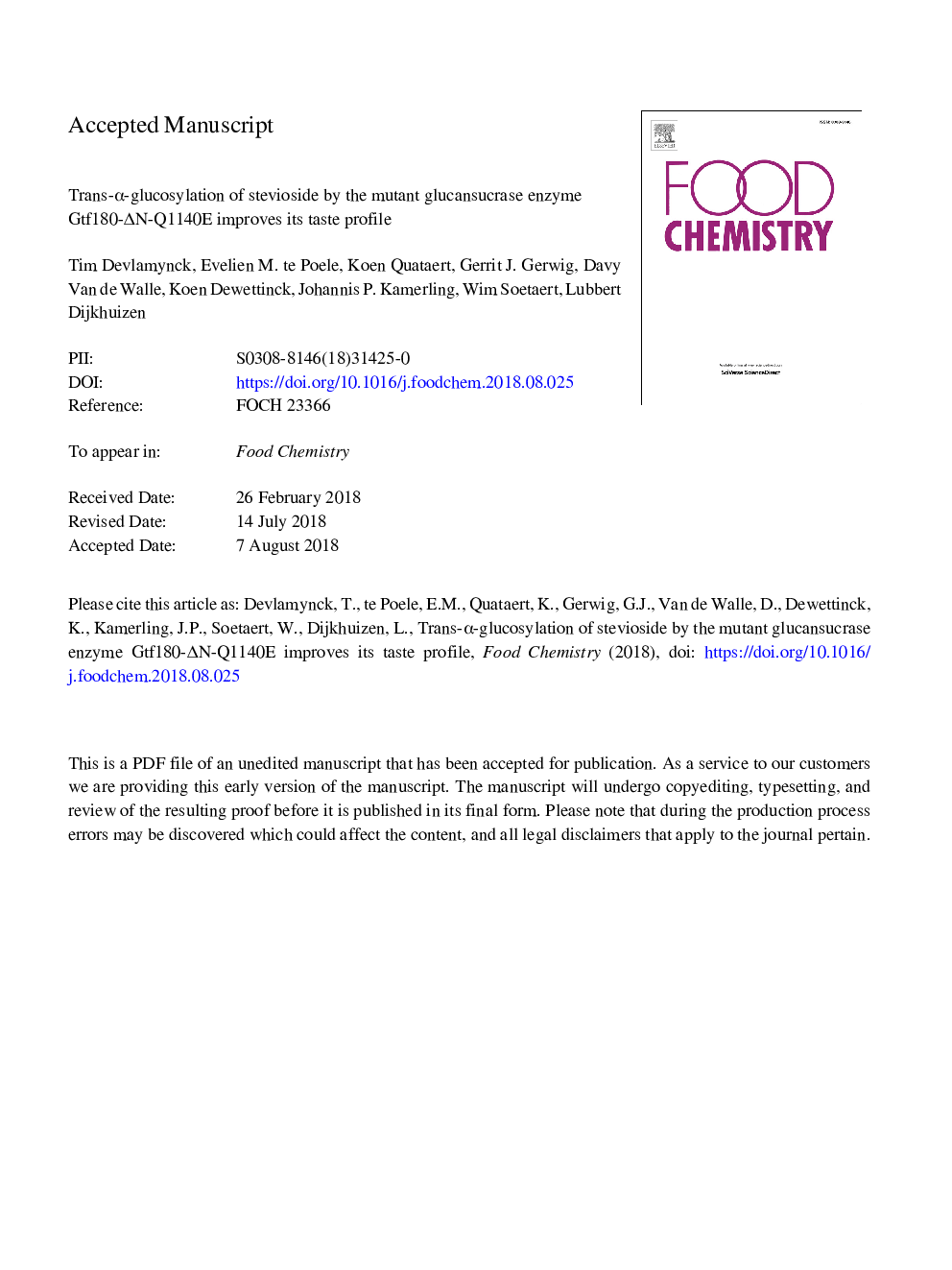| Article ID | Journal | Published Year | Pages | File Type |
|---|---|---|---|---|
| 11005649 | Food Chemistry | 2019 | 35 Pages |
Abstract
The adverse health effects of sucrose overconsumption, typical for diets in developed countries, necessitate use of low-calorie sweeteners. Following approval by the European Commission (2011), steviol glycosides are increasingly used as high-intensity sweeteners in food. Stevioside is the most prevalent steviol glycoside in Stevia rebaudiana plant leaves, but it has found limited applications in food products due to its lingering bitterness. Enzymatic glucosylation is a strategy to reduce stevioside bitterness, but reported glucosylation reactions suffer from low productivities. Here we present the optimized and efficient α-glucosylation of stevioside using the mutant glucansucrase Gtf180-ÎN-Q1140E and sucrose as donor substrate. Structures of novel products were elucidated by NMR spectroscopy, mass spectrometry and methylation analysis; stevioside was mainly glucosylated at the steviol C-19 glucosyl moiety. Sensory analysis of the α-glucosylated stevioside products by a trained panel revealed a significant reduction in bitterness compared to stevioside, resulting in significant improvement of edulcorant/organoleptic properties.
Related Topics
Physical Sciences and Engineering
Chemistry
Analytical Chemistry
Authors
Tim Devlamynck, Evelien M. te Poele, Koen Quataert, Gerrit J. Gerwig, Davy Van de Walle, Koen Dewettinck, Johannis P. Kamerling, Wim Soetaert, Lubbert Dijkhuizen,
